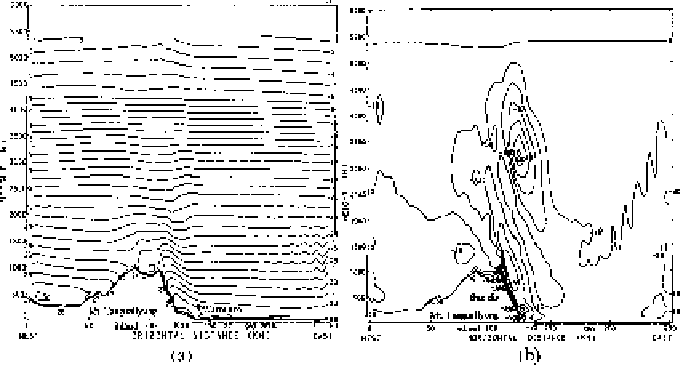Geoscience Reference
In-Depth Information
Fig. 4. (a) As shown in Fig. 3(c), except for air temperature (
◦
C) and sensible heat
flux (W/m
2
).
in the narrow atmospheric boundary layer along the slope, as shown in
Fig. 4(a). On the other hand, sensible heat fluxes at the inland coastal
surface (or coastal sea) and in the lower atmosphere are just
20 W/m
2
(or
−
10 W/m
2
), very small sensible heat flux
divergence (or no flux divergence) occurs in the coastal area.
So, sensible heat flux divergence is much greater at the top of moun-
tain and along the eastern slope than at the coastal inland surface near
Kangnung city and the sea surface. It appears that the mountain surface
more cools down than the coastal inland surface and the sea surface, and
the nighttime air temperatures near the coastal inland and sea surfaces are
not much changed from daytime one, resulting in the persistence of noctur-
nal warming over the coast near Kangnung city and the sea surface and the
formation of nocturnal thermal high (tropical night). One of possible mech-
anism on the formation of tropical night is some amount of heat transfer
from warm pool of 34
◦
C into the coastal surface, penetrating through very
shallow nocturnal surface inversion layer less than 100 m depth.
10 W/m
2
)and
20 W/m
2
−
−
(or
−
3.3.
Comparison of observed results with calculated ones
by a model
Through 48 h numerical simulation with G-ANAL data sets, numerical sim-
ulation results of air temperature on heat budget such as sensible heat in









